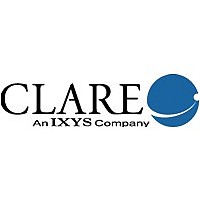M-8888-01P Clare, M-8888-01P Datasheet - Page 2

M-8888-01P
Manufacturer Part Number
M-8888-01P
Description
IC TRANSCEIVER DTMF CMOS 20-DIP
Manufacturer
Clare
Datasheet
1.M-8888-01P.pdf
(14 pages)
Specifications of M-8888-01P
Function
DTMF Transceiver
Number Of Circuits
1
Voltage - Supply
4.75 V ~ 5.25 V
Current - Supply
10mA
Power (watts)
78.75mW
Operating Temperature
-40°C ~ 85°C
Mounting Type
Through Hole
Package / Case
*
Includes
Automatic Tone Burst Mode, Call Progress Mode
Lead Free Status / RoHS Status
Lead free / RoHS Compliant
Interface
-
M-8888
2
Single-Ended Input Configuration
Functional Description
M-8888 functions consist of a high-performance
DTMF receiver with an internal gain setting amplifier
and a DTMF generator that contains a tone burst
counter for generating precise tone bursts and paus-
es. The call progress mode, when selected, allows the
detection of call progress tones. A standard 8051,
8086/8 series microprocessor interface allows access
to an internal status register, two control registers, and
two data registers.
Input Configuration
The input arrangement consists of a differential input
operational amplifier and bias sources (V
Pin Functions
IRQ /CP
Name
D0-D3
OSC1
OSC2
TONE
St/GT
V
RS0
WR
IN+
V
ESt
V
IN-
RD
GS
CS
REF
DD
SS
Noninverting op-amp input.
Inverting op-amp input.
Gain select. Gives access to output of front end differential amplifier for connection of feedback resistor.
Reference voltage output. Nominally V
Negative power supply input.
DTMF clock/oscillator input.
Clock output. A 3.5795 MHz crystal connected between OSC1 and OSC2 completes the internal oscillator circuit.
Dual tone multifrequency (DTMF) output.
Write input. A low on this pin when CS is low enables data transfer from the microprocessor. TTL compatible.
Chip select. TTL input (CS = 0 to select the chip).
Register select input. See Internal Register Functions on page 7. TTL compatible.
Read input. A low on this pin when CS is low enables data transfer to the microprocessor. TTL compatible..
Interrupt request to microprocessor (open-drain output). Also, when call progress (CP) mode has been selected and
interrupt enabled, the IRQ/CP pin will output a rectangular wave signal representative of the input signal applied at the
input op-amp. The input signal must be within the bandwidth limits of the call progress filter. See Timing Diagrams on
page 11.
Microprocessor data bus. TTL compatible.
Early steering output. Presents a logic high once the digital algorithm has detected a valid tone pair (signal condition).
Any momentary loss of signal condition will cause ESt to return to a logic low.
Steering input/guard time output (bidirectional). A voltage greater than V
the detected tone pair and update the output latch. A voltage less than V
GT output acts to reset the external steering time-constant; its state is a function of ESt and the voltage on St.
Positive power supply input.
REF
) for bias-
DD
/2 is used to bias inputs at mid-rail.
www.clare.com
ing the amplifier inputs at V
for the connection of a feedback resistor to the op-amp
output (GS) for gain adjustment. In a single-ended
configuration, the input pins should be connected as
shown in the Single-Ended Input Configuration above.
Differential Input Configuration above shows the nec-
essary connections for a differential input configura-
tion.
Receiver Section
The low and high group tones are separated by apply-
ing the DTMF signal to the inputs of two sixth-order
Differential Input Configuration
Description
TSt
TSt
frees the device to accept a new tone pair. The
detected at St causes the device to register
DD
/2. Provisions are made
Rev. 1















